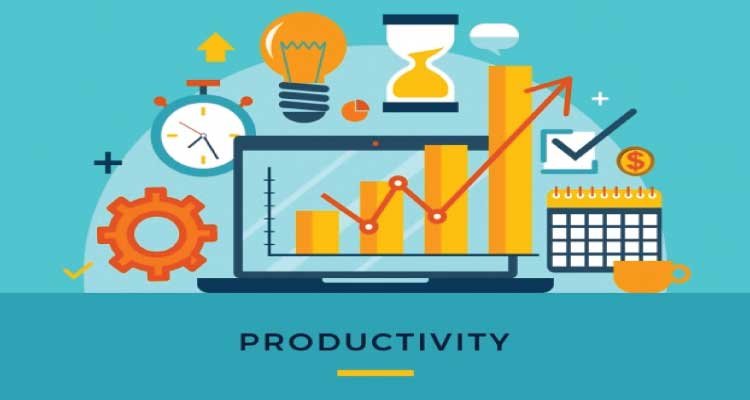Knowing how to be more productive can take you from the level you are right now to twice the level you never thought you’d be. First, who is a “productive” person? Would it be someone with a quasi-robotic ability to do chains of tasks, hour after hour? should we look at it as a matter of discipline? Or the pace at which someone works?
In my opinion, maybe the capacity to produce high-performance work in a short time is true productivity. This is the kind of productivity that we should be concerned about, not the other commonly accepted types of productivity. These are focused on the amount of effort, not the long-term results.
There is a promise behind the notion of productivity. The promise is that it will be possible to achieve our goals more quickly, to accomplish extra, to make better use of our time, and to be organized and as well be in control.
To many, being more productive means doing more.
It means finishing more tasks. Chain the hours of it. Getting up early and going to bed later.
This approach can work and produce results in short term. But, in the long run, this is the recipe for exhaustion and burnout.
[tweetshare tweet=”Productivity cannot be measured only by the number of answered emails, or numbers of an accomplished task. Because productivity is not a sprint, but a marathon.” username=”2ca58b9919a9d9d98c0750aef02a9a52″]
Being more productive doesn’t mean going full blast on a lot of things, but rather moving consistently on a handful of things that really make a difference.
[lwptoc]
Productivity is the way you manage yourself and the habits you develop. By choosing certain habits over others, you will be able to generate more results at the same time.
In this article, we will see how to identify the tasks that make a difference and the techniques, tips, and habits to be followed in order to be more productive on a daily basis.
Starting off, Let’s look at productive practices
Practice 1 – Get organized by Taking out what isn’t important (and focusing on the important)
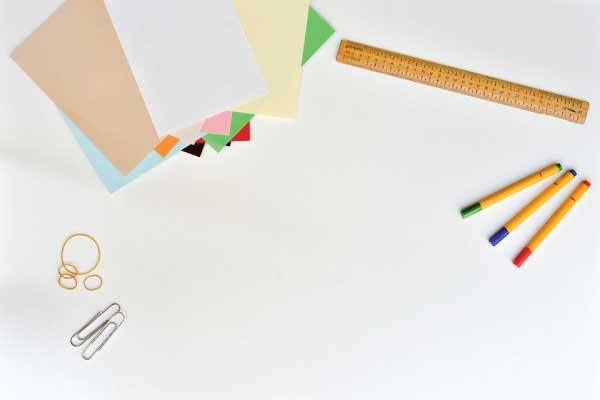
The first habit of productive people is cutting down and removing everything that isn’t important.
Our brains are not designed to store all our tasks, projects, and ideas. That is why it is necessary to transfer them to the paper or to unload them within an application.
Among the best task management applications, we have apps like Trello, Todoist, Notion, etc to help you manage documented tasks.
When I get to work, I first write down the list of activities that I have to do for the day. Then, I judge what’s most important in the list, I circle it, and finally, I rank it by importance.
After that, I ‘m testing these to-dos to see if they’re worth the time I spend on them. What kind of impact will they have? Are there other higher value-added activities to be accomplished? These questions help me make sure I ‘m working on the most important tasks of the day.
So, for unimportant tasks, I’m either postponing them or removing them from the list. Ask yourself, for everything you’re doing right now if it really matters.
Is it really going to bring you closer to your dreams? Will this activity have a long-term impact on your life? Is this really the best way to take advantage of your time?
If your answer is “yes” to all of these questions, keep up with this task. If not, it may be time to remove it. There’s no point in doing something that isn’t important!
Unfortunately, many people find it difficult to evaluate their daily tasks, and they all consider them important. From the questions I raised above, my most important tasks are those that bring me closer to my dreams when I realize them.
For example;
working on my blog empowers me to reach out to more people. This then enables me to move closer to my goal, which is to allow people to reconnect with their potential and live a fulfilling life. For you to read this, I like to think you’ve found this blog partly because of my efforts to reach you, and partly because of fate.
But it’s not stopping to identify important tasks. Often, during the day, we are drowned in a flood of diverse and varied demands. A task like paying attention to your phone notification while working on something else can make you less productive on a given task at hand. However, it is key to pay attention to the diversities of a distracting task and get ourselves organized by doing the ones that are of high importance.
Practice 2 – Align your tasks
When we align our tasks strategically, we are able to do our projects more effectively, even the most ambitious.
This idea of alignment comes from Gary Keller ‘s book The One Thing.
In this book, Keller explains all the power that the alignment of our tasks can have in our work, thanks to what he calls the Domino Effect.

It shows that the dominoes have the power to overturn the dominoes that are x 1.5 of their size. He adds that this force could produce extraordinary results:
“Imagine a long line of dominoes lined up behind each other, and each of them is x 1.5 times the size of the one before it. If you knocked over the first two-inch domino, you would trigger a chain reaction where the 57th domino would have enough force to knock over a domino the size of the Earth to the Moon. ”
For Gary Keller, the path to success and accomplishment is to line up the steps one after the other like dominoes, then move step by step, making sure that each time you do, it is aligned with our goals. And over time, this habit is increasing our productivity.
At the beginning of the process, you may feel like you’re moving slowly, or even doing things that don’t help.
That’s right, after all, why bother to post this article on our new blog? No one’s going to read it anyway. And then why are you going to this networking event? Our new project is not credible enough, nobody is going to want to hear about it.
But just as a 2-inch domino may seem insignificant at first, it is these first actions, no matter how little, that begins a process that allows us to do bigger things.
All the great successes that we know today all began with something insignificant:
- Mark Zuckerberg started writing the first line of code to Facebook on his computer.
- Oprah Winfrey showed up at the Miss Black Tennessee pageant, where she was spotted by a local radio station, and that’s what propelled her media career.
All these people began with the smallest of actions. Then they kept moving step by step, making sure they were always aligned with their goal. This is what propelled them to become what they are today.
[tweetshare tweet=”Therefore, to be successful, we must start small and continue to align our tasks, priorities, and actions until we achieve our desired goals.” username=”2ca58b9919a9d9d98c0750aef02a9a52″]
Practice 3: Take breaks strategically

The second habit of increasing productivity is to allow yourself to make effective breaks.
I don’t think that being productive just involves the act of working nonstop like a robot. On the contrary, working like a robot makes you become less productive. Consider taking a break.
To explain this further here’s an example;
let ‘s say you ‘re going to write a book. Oftentimes, you put together 1,000 words per hour while working on your manuscript.
You’ll maintain a flow of 1,000 words per hour in the first two hours. But from the 3rd hour, you’ll feel tired and so you’ll only write 500 words per hour. Now, 500 words less than your usual pace in economics, is called the Law of Diminishing Returns.
Rest, is very important. No matter how hard you want to work, there are parts of your life that work can’t replace, like love, family, health. That’s why our life is segmented, every “segment” is unique and irreplaceable.
Spending more time at work doesn’t necessarily mean that you get more done in quantity, however, applying this strategy AND increasing the time spent at work will maximize your efficiency.
If you are self-employed or have a flexible schedule, you can easily put that into practice. Even if you have a rather rigid hourly job, you will be able to take it to a lesser extent.
Take a short break as soon as you feel unproductive. Get away from your desk, get some coffee, refresh your face, talk to a colleague at work. When you get back to work, you’ll be fresh and ready to deliver.
Practice 4: Break up your big projects into small tasks
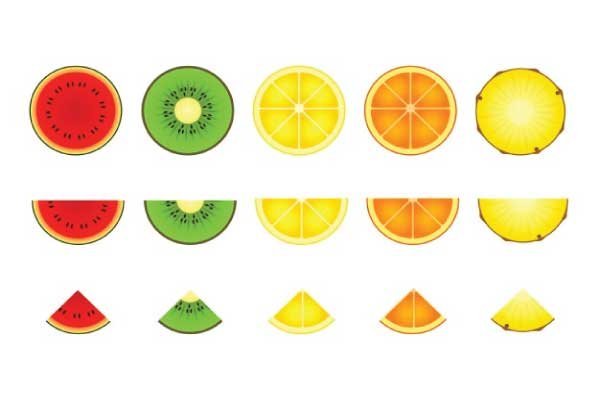
It becomes tempting to procrastinate when the work to be done and the effort to be provided are substantial.
Big projects like writing a book or building an app, for instance, are intimidating when viewed as a whole. And as we think they ‘re hard to reach, we tend to put them off until the next day.
One effective way to avoid procrastination is to break up our projects into smaller, digestible tasks.
For example, to write a book, we can start with a very simple step:
Take a piece of paper, write down the subject of the book, and summarize what it is in one paragraph.
It’s very simple. This is the power of this technique.
There are chances that we get to work when it is written on our to-do list:
“Write a paragraph that sums up the book ”
Rather than
“Write a book”
The idea here is, to prepare our work by defining the stages and sub-tasks of our projects in order to make them more accessible. This way, you know exactly what to do at every moment, and you’re less likely to procrastinate.
Practice 5: Tap into your inspiration

The 5th habit of increasing your productivity is to tap into your inspiration.
Of course, it’s important to maximize what inspires you. But no matter what field you ‘re in, your inspiration is the key to your results.
For example, an inspired programmer will develop programs that will improve people’s lives. An inspired civil engineer will design efficient structures with an excellent design.
Also, an inspired advertiser will create revolutionary marketing plans that touch people’s hearts. An inspired writer will write quality works on a continuous basis. A very inspired musician can make as many compositions as he wants.
So what are you going to do to tap into your inspiration? Are you just sitting there and doing nothing, waiting for inspiration to hit you before you get down to business? It’d be like letting your environment control you.
I often hear people say they have no plans to write because they’re not inspired.
I don’t think there’s any point waiting for inspiration to come on its own, but rather learning to guide inspiration to you.
How do you do that? It’s very simple: think about what inspires you in your life. Is it helping others to grow and develop? Or Build relationships with others? Get recognized for your work? Resolve poverty? Help the needy? Become no 1 in your field? How can you achieve your goals? Find your motivations and use them to enhance yourself.
Practice 6: Eat a frog every morning

Mark Twain once said that if you eat a live frog early in the morning, you can go through the rest of the day knowing that nothing worse is going to happen.
Brian Tracy’s frog refers to our most important or most difficult task. According to him, we need to start our days by tackling the most challenging work for two reasons.
First of all, in the morning, we have more energy that will that makes it relatively easier to carry out a challenging task.
And secondly, once the work is done, we enjoy a feeling of accomplishment throughout the day that has a positive impact on all the other tasks that follow.
That’s why “eating a frog” is the best way to start our days.
Practice 7: Make the most of your free time

Free time isn’t just when you’ve got nothing to do with it. These are also the moments you’ve had between your different activities. You have free time when you’re waiting for someone, when you’re on the road, when you’re walking from one point to another, etc.
Take a look at your schedule. What free time do you have to use? How could you get the most out of it? Put aside a few things to do during these vacant times, like listening to podcasts, reading a book, making a schedule, etc. you’ll be surprised how much you can do in such a short time!
Practice 8: Avoid multitasking

Multitasking makes us lose more time than we actually gain.
A study by the National Institute of Health and Medical Research found that people who have multi-tasked have made 3 times more mistakes than people who have focused on one thing at a time. This means that a person who has multiple tasks will also waste more time correcting mistakes.
Another study from the Journal of Experimental Psychology confirms this research by indicating that multitasking causes us to waste 40% of productive time.
When you’re constantly switching from one task to another, you actually waste a lot of time refocusing.
So it is in our best interest to focus on one thing at a time to avoid mistakes and save time.
Here are 20 Most Effective Ways To Overcome Multitasking Problems And Focus More
Practice 9: Set deadlines

The ninth habit of productive people is to set deadlines.
This is a key practice for productivity. According to Parkinson’s Law, work is spread out in such a way as to cover the full time allocated to its completion. This means that if you don’t set a time limit, it might take forever to get what you’re doing.
If you give yourself two weeks, you’re going to take two weeks. If you give yourself a week, it’s going to take you a week. Interestingly enough, if you set yourself a time, you can also finish in an hour if you really want to (as far as possible, of course).
Set deadlines for yourself. By setting When you set a time frame for yourself, you anchor in yourself the intention to complete your task in the time allotted, allowing it to be done. And that’s exactly what I do with my own goals.
Be clear about what you want to do (as stated in Practice 1), then set the time you want to do it. What exactly do you want to finish this month? What makes you say that this is the best way to use your time and that there is no more efficient way?
Pick your targets (which are important to you) and set your weekly targets from there. Finally, you can also set your daily goals, which will be your day-to-day goals.
Practice 10: Beat your tasks
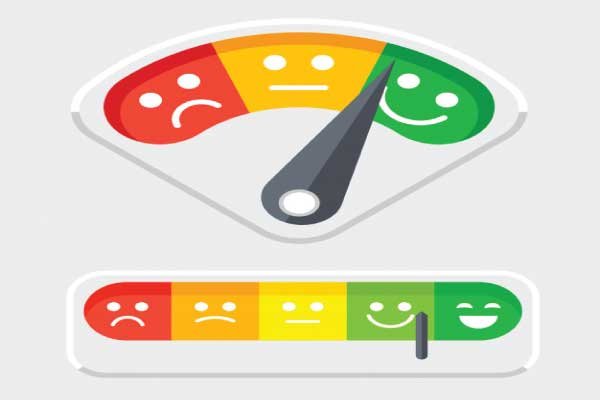
It is not ideal to use a washing machine to wash a pair of socks. Usually, you wait until you reach a certain critical mass before you start the washing machine, so you do it all at once. This process is called batching.
Batching consists of grouping together a number of similar tasks to process them all at once and without interruption. This allows us to save time by avoiding the need to systematically refocus on our tasks.
For example, instead of processing our emails throughout the day, we can beat them by taking 1 hour at the end of the day to process them all at once.
Practice 11: Eliminate distractions

[tweetshare tweet=”“ By fighting against all obstacles and distractions, we can infallibly achieve our goal or our destination ” – Christopher Columbus” username=”2ca58b9919a9d9d98c0750aef02a9a52″]
Ambient noises, notifications, social networks, emails, phones, latest trends. These are all distractions that make us lose productivity.
Here are some tools, habits, and apps that can help to reduce or eliminate these distractions:
Meditate: By meditating on a daily basis, one can eliminate distractions more easily and quickly. Meditation is inherently a great exercise in learning how to channel distractions.
Applications: Applications like SelfControl and Freedom allow us to restrict access to certain sites and applications that are likely to distract us.
Tech accessories: Noise-canceling headphones such as BoseQuietComfort (aff) are a great way to reduce noise distractions significantly.
Muse (aff) is also an innovative way to train in order to eliminate distractions. This headband, connected to the headphones, guides us through the sounds of nature in our meditations.
When our brains are distracted, restless, and stressed, we hear the sound of powerful waves in the middle of a storm, and as we calm down, the storm also calms down and gives way to less choppy seas.
Eventually, more extreme accessories like Pavlok train us from being distracted by sending us electric shocks.
Practice 12: Respect the Rule of 2 min

The rule of 2 min is simple: If it takes us less than 2 minutes to complete a task, we must do it immediately to avoid occupying our minds.
Typically, if we open an email asking for a document, we need to send it immediately because it only takes a few seconds. This way, you can move on quickly and not think about it.
Practice 13: Automate Everything You Can

Technology has enabled us to automate a lot of things today. While some tasks can not be fully automated, we can still use systems to do most of the tasks for us.
Write down what you’re doing in the daytime, and see if there are things you can automate. Here are some non-productive activities that we do on a regular basis:
- Delete, archive and sort your emails
- Read the different facts on the news sites
- Pay your bills by check/credit card every month.
- Schedule of appointments
Schedule what we’re going to do in the coming weeks/months (it’s unproductive because it can change in the meantime).
Here are some little things that you can automate:
Emails: Create filters to separate blog-related emails, personal emails, “useless” emails. Also have filters that put your newsletter subscriptions in different folders, depending on the subject. So that your only job is to read emails and answer them as needed, not sort them out.
Planning: You can automate your schedules. Fixed the different things that you have to do every day, week, or month, like paying bills, practicing (daily), writing articles … so that you don’t have to worry about it later.
Twitter / Facebook: You can also automate your tweets, which are shared at the same time that I post my articles. Every time a new post comes out, it’s announced by a tweet, and my Facebook / Pinterest feeds the same.
There are more ways you can automate some of your tasks. But I will stop right here. By automating your day-to-day to-do list, you save your time for the things that really matter.
Practice 14: Use the Sandwich Technique
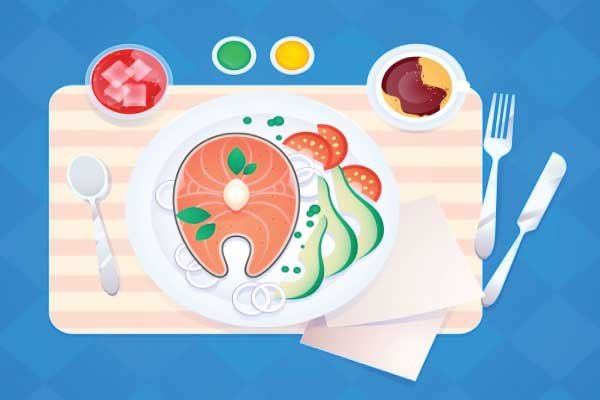
The problem with having a deadline is that it is usually artificial. Nothing really forces us to respect that. We can use the Sandwich technique to make the deadline more real and less arbitrary.
This technique consists of combining our tasks with two activities that we can not escape. For example, if we write an article, we can get this task caught between a client call and a meeting. And if you decide to run in the morning, you can stop this activity between the time you get up and the time you leave for the office.
It gives us a more tangible reason for completing a task before a certain date or time.
Practice 15: Eliminate your tasks
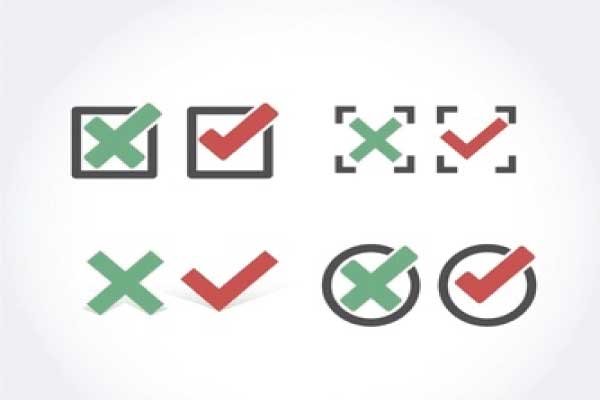
[tweetshare tweet=”“ I’m as proud of the things we didn’t do as of the things we did” – Steve Jobs” username=”2ca58b9919a9d9d98c0750aef02a9a52″]
We are productive because of the things we do, but also because of the things we don’t do. That’s why we need to eliminate tasks that are unnecessary to be more productive on a regular basis.
Going back to Eisenhower’s matrix, unnecessary tasks are those that are neither important nor urgent. In other words, it is work that has no impact on our objectives.
Therefore, do not hesitate to go through our full list every week and eliminate all tasks that are not aligned with our objectives and priorities.
Practice 16: Measure your productivity

Measurement is a good way to improve our productivity. That is to say, to calculate the amount of time we spend carrying out our tasks helps to analyze how we allocate our time.
The RescueTime and Timing applications are perfectly suited for this purpose.
These applications allow you to track the time you spend on each site and application and automatically detect when you are productive and when you are less productive. We can also find out which applications we waste most of our time and identify trends.
So we can optimize our days by using concrete data and challenging each day to always do better.
Also here is 23 Genius Productivity Hacks That Gives Guaranteed Growth
Practice 17: Don’t look for perfection

The search for perfection creates two main problems.
The first is that it’s wasting our time. When we strive for perfection, we often take more time to get a job done. We spend hours changing the wording of our sentences, adjusting the size of the logo on our site, and changing the colour of the image hundreds of times. All those hours spent adjusting these details would be much better spent on dealing with other more important tasks.
Seeking perfection is creating blockages, too. It’s more difficult to get down to work by setting the bar high, and often we tend to procrastinate. As we procrastinate, we feel guilty for not moving forward with the tasks that are frustrating us.
And the more frustrated we are, the more we get stuck with it. This makes us waste even more time … and then we find ourselves in an unproductive spiral where every task seems to us to be far more difficult than it really is.
Therefore, to be more productive, we must learn to release the pressure and forget about perfection. Because it’s when we’re relaxed that we’re doing the best we can.
Practice 18: Don’t look for shortcuts

Searching for shortcuts is sometimes a waste of time, as Shane Parrish explains:
“We often try to avoid difficult things, so we take shortcuts. And when we’ve exhausted all the shortcuts, we have no choice but to do the hard things we were initially trying to avoid.
It is much easier and faster to stop avoiding difficult things and face them directly.
The difficulty of the obstacle is always visible but the reality of the shortcuts is almost always hidden. This partially explains why we tend to gravitate towards shortcuts and also why they don’t work. ”
Practice 19: Learn More and Improve Productivity Performance

Learning saves us a lot of time and improves the performance of our tasks and projects. When we learn new skills, we give ourselves a chance to do things better and faster.
If we spend time learning how to use Final Cut Pro, for example, we can produce better videos in less time because we know how to use different features.
Also, if we learn to code, we can create some programs to automate our tasks.
As well as if we learn the fundamentals of investing in real estate, we avoid certain mistakes that can cost us a lot of time and money.
Learning helps us make better choices and find the best way to do our jobs.
If you want to improve your skills, here are a few platforms to consider:
- Udemy
- The Wagon
- Skillshare
- Lynda
Practice 20: Start Implementing Practice 1 – 19

You now have a handful of information, so all you have to do is to start implementing them to our advantage. Get inspired to benefit from them. There is no point in applying it to the latter.
We’re all different. Our goals are different, our thinking is different, and our work is different. This requires the adaptation of techniques to suit you and to work for you. Implementing the one that suits your style of work will make you productive all round.
For more, check out my medium post on How to be Productive.
